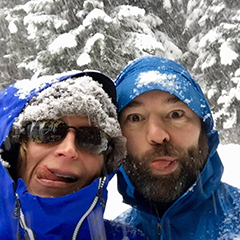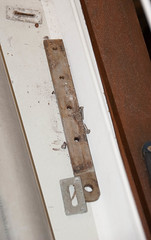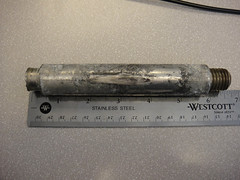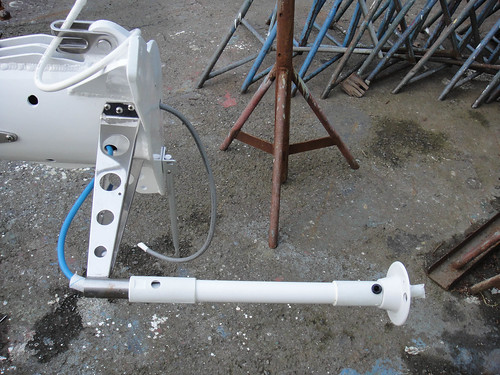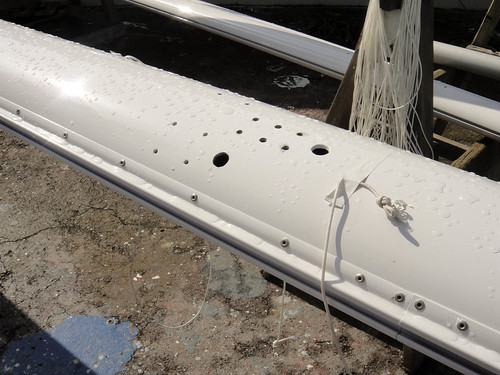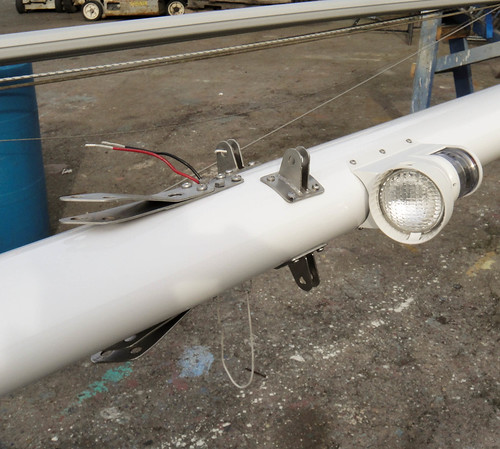Installing Rebedding Chainplates
Posted on Tue 25 May 2010 in Projects
Before
- The chainplates were previously pulled and cleaned up with a Scrotchbrite pad and water.
- They were then polished by sanding with progressively finer grades of sand paper starting at 120 grit and going up to 1200 grit.


 Plates were then dry fitted and marked with tape so we knew how
thick the desk was and where to apply the butyl.
Plates were then dry fitted and marked with tape so we knew how
thick the desk was and where to apply the butyl.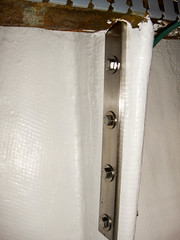
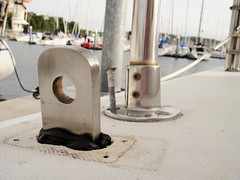 Butyl rope caulk which we got from New Found Metals when we
purchased our potlights was wrapped around the chainplate and then
it was inserted into the deck again and through bolted. The butyl
you see sticking out here was pushed down into the deck.
Butyl rope caulk which we got from New Found Metals when we
purchased our potlights was wrapped around the chainplate and then
it was inserted into the deck again and through bolted. The butyl
you see sticking out here was pushed down into the deck. The chainplate covers were then placed down with 3M 4200 and screwed
into place.
The chainplate covers were then placed down with 3M 4200 and screwed
into place.
We’ve had some really good rain and no leaks through the chainplates. The chainplates were previously hidden behind teak enclosures, we plan to leave them open so we can inspect them and notice any issues sooner. Plus look how shiny they are !! Dawn did most of the work on this one, I only did some late night sanding. Did I mention how awesome she is?
